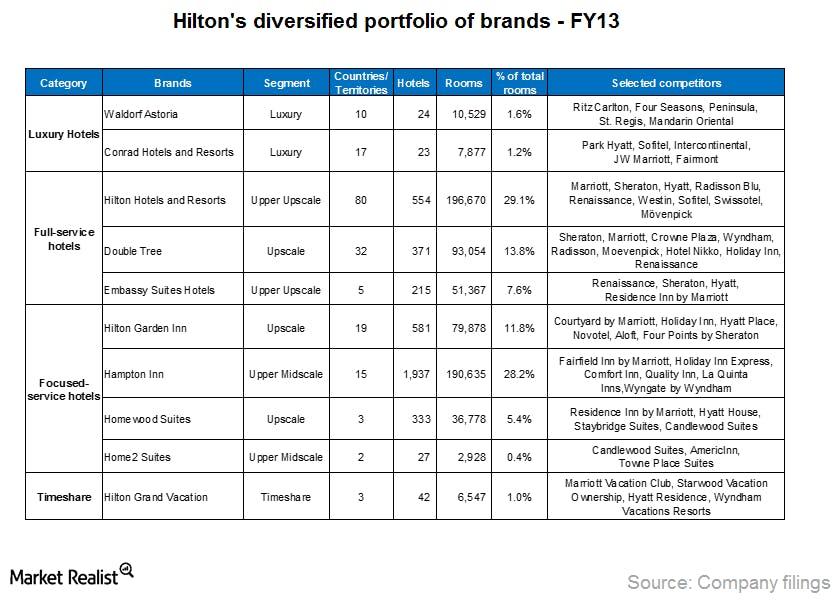Hilton’s hotel room composition by brand and chain scale
Hotel companies, like Hilton, expand their operations based on the demand for accommodations by location. They also expand based on customer preference for the level of service offerings.
Sept. 1 2020, Updated 9:55 a.m. ET

Rooms by brand
Hotel companies, like Hilton, expand their operations based on the demand for accommodations by location. They also expand based on customer preference for the level of service offerings. For Hilton, Hilton Hotels & Resorts is the leading brand. It accounted for ~29% of the total rooms. It’s found in 80 countries. Other important brands are Hampton, DoubleTree, and Hilton Garden Inn. They account for ~28%, ~14%, ~12%, respectively, of total rooms.
The table below has more details about room and hotel count. It also includes information about brands offered by Hilton’s (HLT) competitors including Marriott (MAR), Hyatt (H), Wyndham (WYN), and Starwood (or HOT).

Rooms by scale
This classification helps investors understand the price range or average room rates under each brand. This influences the average daily rates (or ADR). ADR is one of the important revenue drivers for hotel companies. According to the STR Global, Hilton’s brands fall under the top three of the five price categories. The categories include:
- Luxury – top 15% average room rates
- Upscale – next 15% average room rates
- Midscale – middle 30% average room rates
- Economy – next 20% average room rates
- Budget – lowest 20% average room rates
Hilton’s diversified portfolio of brands minimizes exposure to one specific customer segment. However, the company is exposed to changing economic conditions. Investors who want to avoid risks can gain exposure to the sector through exchange-traded funds (or ETFs) including the PowerShares Dynamic Leisure and Entertainment Portfolio (or PEJ), the First Trust U.S. IPO Index Fund (or FPX), and the Consumer Discretionary Select Sector SPDR Fund (XLY).
Hotel revenue is organized into three operating segments. In the next few parts in the series, we’ll discuss how hotels under each of the above mentioned brands contribute to Hilton’s revenue.
